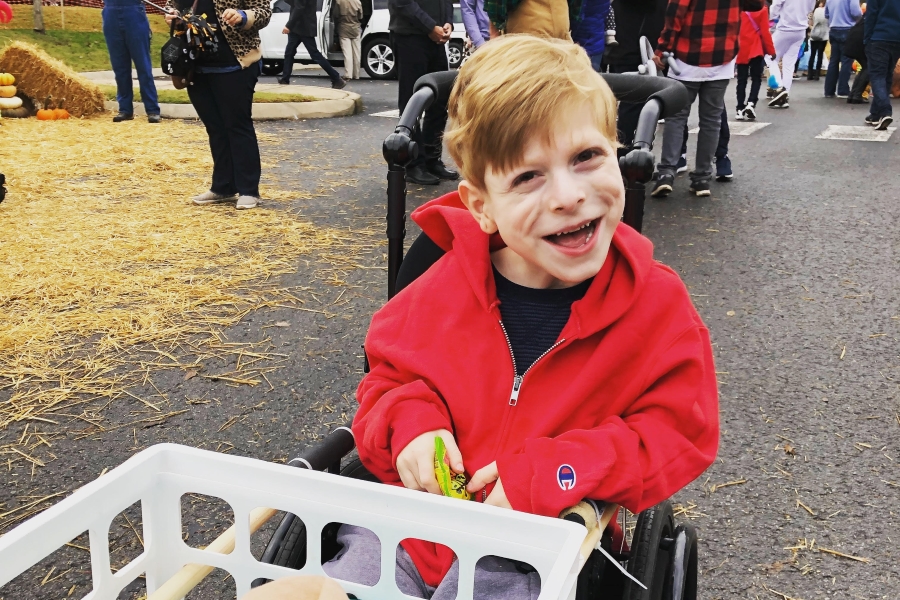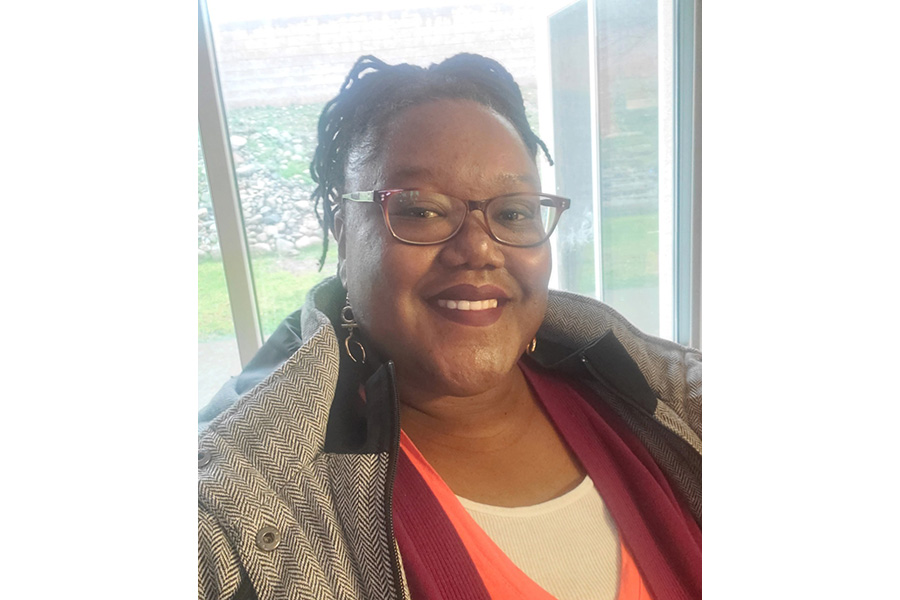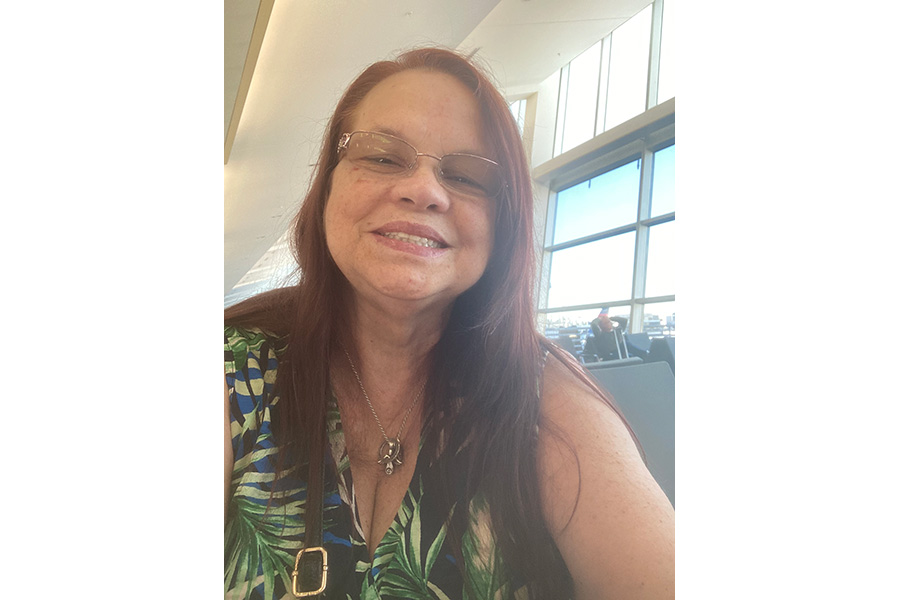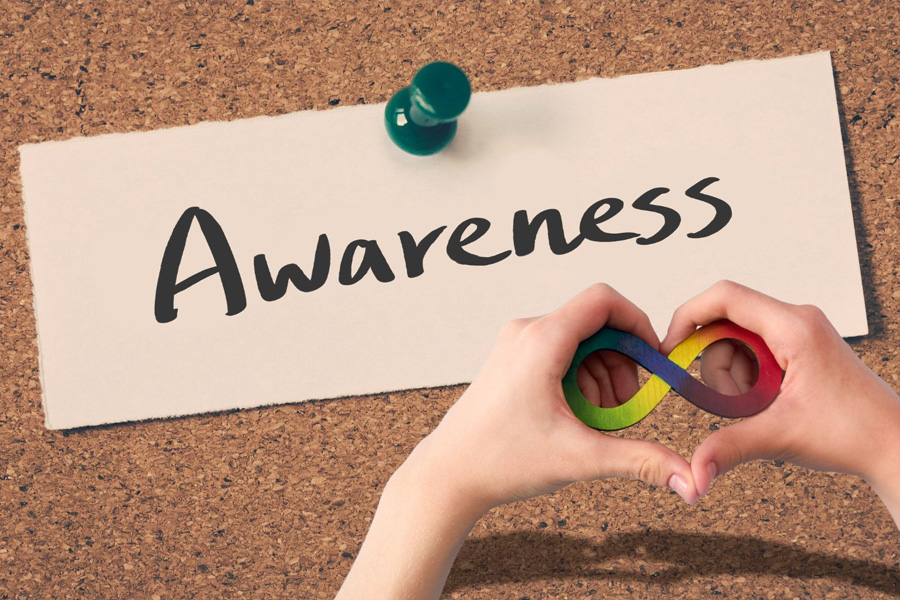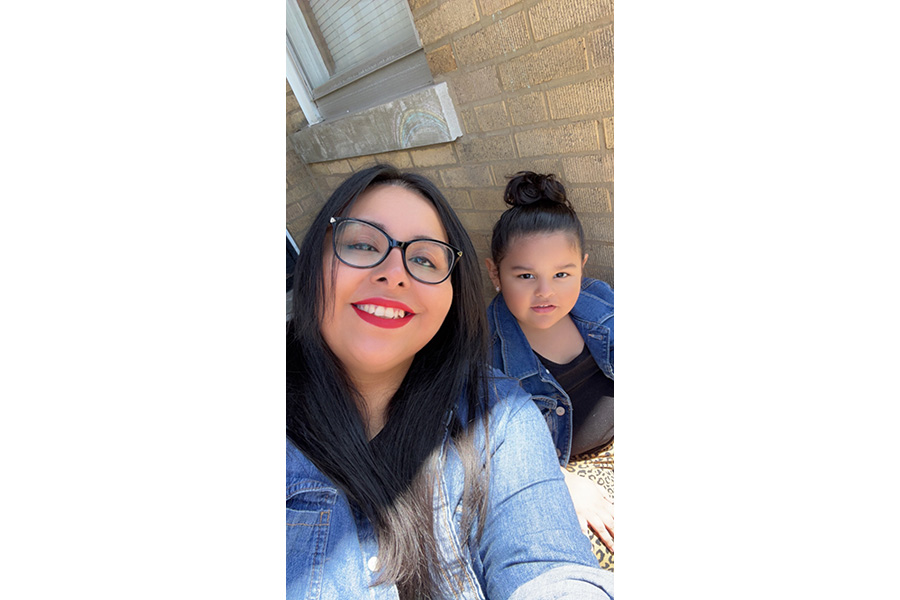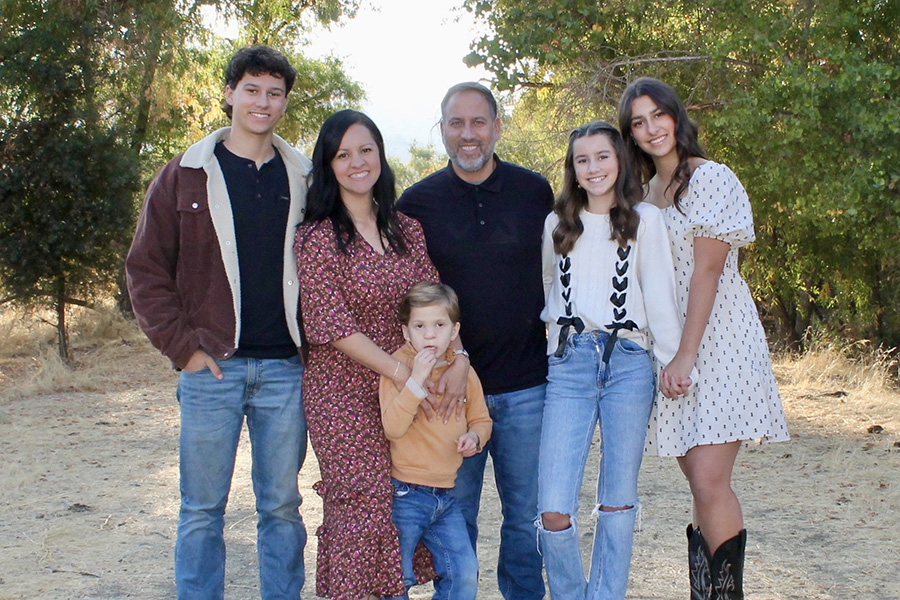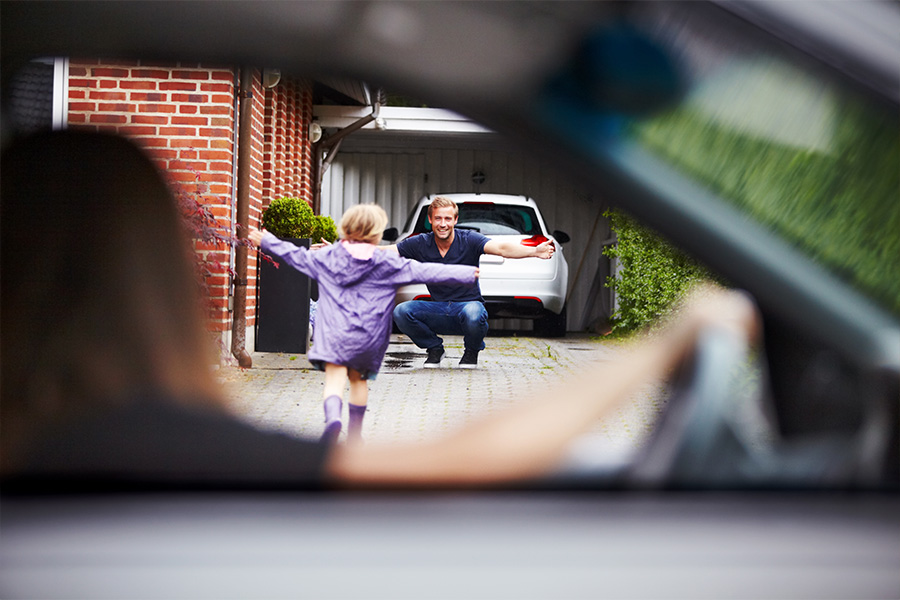For children like Charlie who are navigating the world with a sensory processing disorder, the fear often outweighs the thrill. Because of this, we’re learning to make the world a little less fearful for him, including a sensory-friendly Halloween that the whole family can enjoy.
My son’s first Halloween was a small and unmemorable blip on a screen filled with more pressing things. I dressed Charlie as a tiny lion. He spent most of the night in my arms, chewing on his fluffy tail while I doled out candy at the door. We had no plans to leave the house because the following morning he was scheduled for surgery. Born premature and with a rare syndrome that caused his tongue to be overlarge, he needed a tongue-reduction to be able to eat, breathe, and sleep safely. All I remember thinking that night was, “by this time tomorrow it will all be over.”
Charlie’s Second Halloween
The following Halloween, with a successful tongue reduction and months of recovery behind us, we ventured out of the house to trick or treat for the first time. Charlie was a pumpkin, a la “The Great Pumpkin Charlie Brown.” We trundled him down the street in a little red wagon. He loved the chilly air and the leisurely pace and I had high hopes for this holiday – our very first he could really and truly enjoy. It was a disaster. The houses with the strobe lights made him wince and cry. The plastic, motion-censored witches that cackled as we passed terrified him. The kids, who ran down the street screaming and high on sugar, startled and confused him. We made half an hour.
When we got home, I picked him up in his puffy pumpkin suit and he shuddered in my arms. I chalked it up to his age, the newness of it all and the lateness of the night. But year after year it was the same: tears and fear with none of the joy we saw on the faces of the children around us.
Sensory Processing Disorder
Charlie is eight now and he continues to show aversions to bright lights and loud noises and crowds. He has since been diagnosed with a sensory processing disorder. It was a relief when the doctors identified it – a relief that this was something known, something with some science behind it, even if it was very new, that we could begin to learn about and understand a way that would help us help him. It explained why the sound of a hair dryer reduced him to tears (we couldn’t walk passed a Great Clips if the door was open) and why he disliked the sensation of certain fabrics and light touch. Charlie is not rare in this. According to a 2009 study in the Journal of Abnormal Psychology, 1 in 6 children have some form of sensory issues.
The Child Mind Institute describes individuals with SPD as “hav[ing] trouble handling the information their senses take in—things like sound, touch, taste, sight, and smell.” The senses get flooded and like a traffic jam, they pile up, causing an overwhelming crush of information.
I do not want Charlie to feel overwhelmed by the world, but I also do not what the solution to be isolating him from it. He deserves safe and enjoyable holidays and haircuts and pool time and all the other ordinary life events. It is my job as his parent to help him find ways to engage in all the social activities in which he shows an interest.
Sensory-Friendly Halloween
And so, we have learned a few things when it comes to Halloween. We forgo the Velcro, itchy, flammable nylon costumes for tagless pajamas – if you can sleep as Cookie Monster, why can’t you trick or treat that way? Bonus, he’s already ready for bed when we are done. Because Charlie also has cerebral palsy and uses a wheelchair, we have also purchased a wheelchair-friendly costume and bedazzled his chair. Two years ago, Charlie was Elliot from E.T. He put on a red hoodie, we transformed his chair into Elliot’s bicycle, added a stuffed animal E.T. and we were ready to go. The milk crate held his candy bucket and kept his hands free to roll.
We also have learned that with sensory issues, timing is important. We go early, just as the sun is setting. The strobe lights are still off, the mechanical witches quiet and the streets relatively empty. We make our way from house to house in the late afternoon light when the world is calm and there’s enough daylight left for him to navigate the sidewalks and curbs safely in his wheelchair.
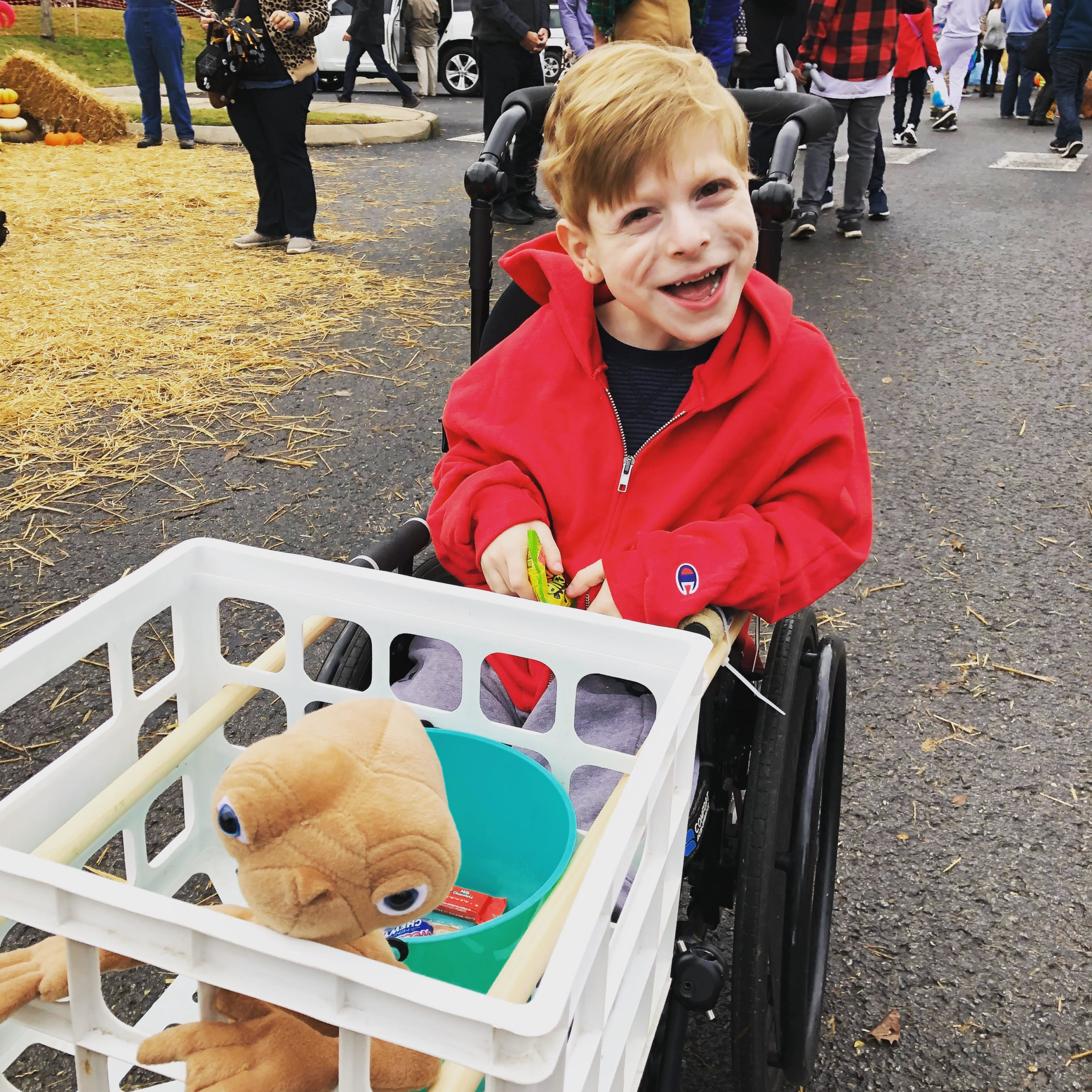
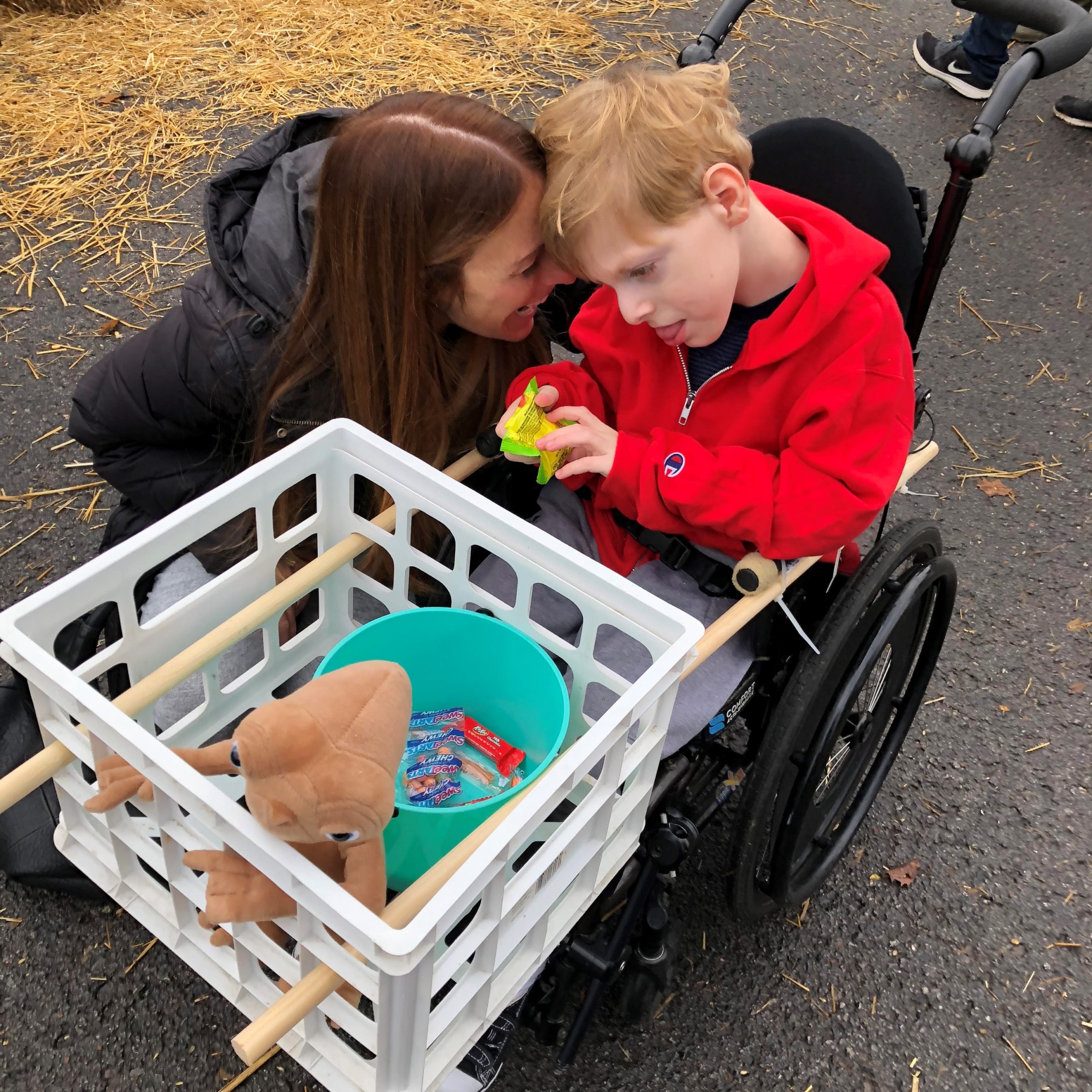
There are two types of anticipation: fear and excitement. Often the two are conflated. It’s the reason why people love scary movies and haunted houses and roller coasters. For children like Charlie who are navigating the world with a sensory processing disorder, the fear often outweighs the thrill. Through his ongoing occupational therapy at school and our own experimenting at home, we are learning to make the world a little less fearful for him, including a sensory-friendly Halloween that the whole family can enjoy. Until society more-widely recognizes those living with invisible disabilities like his and begins to make accommodations, we will make our own.

Jamie Sumner is a special needs mom, author and blogger.
Read her blog, The Mom Gene.
Follow her on Facebook.






